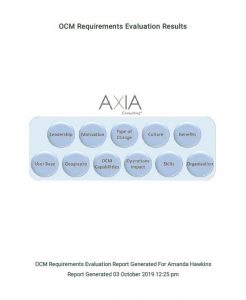Menu
By: Bianka Shah
It was late afternoon when an HR manager pulled me aside into an empty conference room.
Her company was transitioning their service desk to an offshore partner, and she’d been pegged to lead the change management. This woman is very smart and great at what she does. So at the time, taking on the role made sense to her and her bosses. Now she wasn’t as certain.
“I have no clue what I’m supposed to be doing.”
This wasn’t a complete surprise. I’d watched her eyes get bigger and bigger with every meeting as the scale of expectations came into sharper view. Unfortunately, this late in the game, there was very little I could do to help.
In fact, this wasn’t the first time I’d heard this kind of 11th hour admission from an HR manager, director or VP, and it hasn’t been the last. Because while executive leadership usually recognizes gaps in change management, most often they do not stop to recognize the skills needed to fill them.
Instead, they usually conflate HR’s valuable communication skills with an ability to “figure out change management.” Yet these are very different disciplines. Assuming they are the same can be like assuming a brilliant music educator is prepared to conduct a symphony, and the results can be just as messy.
Another company learned this the hard way after a technology change. Since end users had nodded along with new instructions politely during the transition, all was thought to be on track. Yet the lack of change management skill was made clear as the same end users continued to do as they saw fit, and the company’s ability to meet customer demands plummeted.
Sometimes HR can meet the challenge. Low-level changes where some coordinated communications are needed can easily fit within the HR wheelhouse.
However, as the level of change and operational risk rises, so does the need for more specialized skills that typically fall outside HR’s purview––skills like change management assessment and role mapping.
In other words, to increase the chances your transition is successful, you will likely need someone specifically trained in the art of organizational change management (OCM).
Plotting that need can be tricky. There are many variables in play and every company, culture and change initiative is unique. That’s why we developed a 10-question online survey to help executive leadership and HR assess how much OCM-specific skill a successful change program would require.
So: Should HR lead change management? It depends.
HR can be an invaluable resource to help you define job roles and/or the impact to end users in your post-transition environment. At the same time, that doesn’t always mean HR is prepared to lead a successful transition.
Assuming they can “figure it out” not only sets up even the most competent HR leaders for failure, it also adds a huge amount of unnecessary risk to your change initiative.
Please don’t do that.
Instead, invite your HR leaders to help you take a holistic look at what a successful transition will demand. Then, together, do an honest assessment of whether or not all the skills needed are present. Sometimes they are. And sometimes the stakes merit the need to supplement HR with OCM know-how.
Knowing which it is––before it’s already too late––will save a lot of anxiety, headaches and disappointment in the long run.
With any change, processes, roles, responsibility and cultural changes are key to a positive transition. To learn more about what change is needed within your organization.


AXIA’s OCM Requirements Evaluation Report focuses on two aspects, impact and risk, providing you with fast, easy to use insight and recommendations on 11 key dimensions of organizational change management for your business.


As an innovative problem solver, Bianka looks for challenges to assist organizations as they go through their change journey and determine the right approach based on the culture and landscape of the organization.